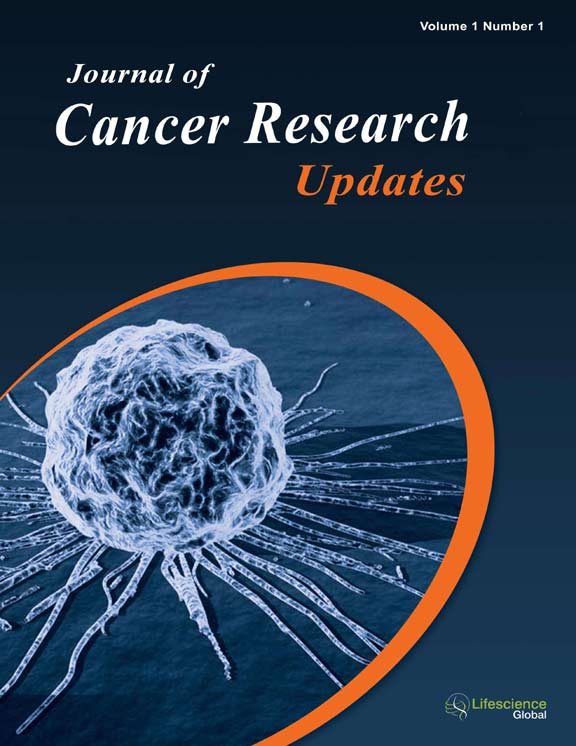jcru
|
|
Abstract: Mammalian P-glycoproteins (P-gp) are members of the broad family of ABC transporters and play important physiological roles in establishing physical barriers that limit access of toxic compounds and thus in the pharmacokinetics of these compounds. Cancer cells exploit the presence of P-gp to fend off anti-cancer drugs, rendering them multidrug resistant (MDR). Structural investigations of P-gp involve the expression and isolation of this large integral membrane protein in high quality and in sufficient quantity for it to be amenable to electron microscopic (EM) and crystallographic studies. EM studies have defined the shape of the molecule and delineated its various conformations in solution but major breakthrough in obtaining atomic resolution structures of P-gp were accomplished by X-ray crystallography. Structures with increasing resolution and accuracy in various substrate and inhibitor bound forms are available for analysis and novel mechanistic insights have been obtained. These advances have paved the way for future research to further our understanding of the mechanism of P-gp function and development of potential inhibitors that may reverse MDR in cancer treatment. Keywords: P-glycoprotein, ABC transporters, Multidrug Resistance, Mechanisms, Structures. Download Full Article |
|
|
Abstract: Number of cancer affected individuals are increasing day by each year, 11 million people are diagnosed with cancer out of which 7.6 million people die of this deadly disease which is a very significant figure in worldwide mortality. It has been estimated that there will be 16 million new cancer cases every year by 2020. Despite tremendous chemotherapeutics are given to treat cancer toxicity appears to be the most seminal point which can kill normal body cells along with abnormal cancerous cells. Therefore, researchers have been devoted to discover less toxic new chemotherapeutics which can prevent damage to the normal tissues. Recent advancements in molecular biology of cancer and different pathways involved in malignant transformation of cells clearly demonstrate that one of the important mechanisms for progression of cancer is abnormal signal transduction via tyrosine protein kinase. Tyrosine kinase catalyzes phosphorylation of tyrosine residues in proteins. The phosphorylation of protein residue results into the functions of protein. Tyrosine kinase function in many signal transduction cascades wherein extracellular signal is transmitted through the cell membrane receptors (EGFr/FGFr/PDGFr/C-src) to the nucleus where gene encoding this receptor protein maybe modified by this signal. Mutation of gene may causes abnormal signal transduction and leads to the progression of cancer. Therefore EGFr, FGFr and PDGFr have become the emerging targets for development of promising anticancer leads having lower toxicity. The present review is an attempt in this direction dealing with various aspects of cancer, molecular pharmacology of EGFr, FGFr and PDGFr tyrosine protein kinases which has a direct bearing on the design and development of newer chemotherapeutics. Keywords: Cancer chemotherapy, EGFr, FGFr and PDGFr as emerging drug targets, Anticancer Drug Design. Download Full Article |
|
|
Abstract: Cancer is one of the most dreaded diseases of modern world. Breast cancer is the second most type of cancer & the fifth most common cause of cancer related death so it’s a significant public health problem in the world especially for elderly females. Computer technology specifically computer aided diagnosis (CAD), relatively young interdisciplinary technology, has had a tremendous impact on medical diagnosis of cancer detection due to its accuracy and cost effectiveness. The accuracy of CAD to detect abnormalities on medical image analysis requires a robust segmentation algorithm. To achieve accurate segmentation, an efficient edge-detection algorithm is essential. The mammogram is a comparatively efficient and low cost diagnostic imaging technique for breast cancer detection. In this paper a robust mammogram enhancement and edge detection algorithm is proposed, using tree-based adaptive thresholding technique. The proposed technique has been compared with different classical edge-detection techniques yielding acceptable out come. The proposed edge-detection algorithm showing 0.07 p-values and 2.411 t-stat in one sample two tail t-test (α = 0.025). The edge is single pixeled and connected which is very significant for medical edge-detection. Keywords: Mammogram, CAD, Edge Detection, Full and Complete Binary Tree, Adaptive Threshold, Histogram, Average Bin Distance (ABD), Maximum Difference Threshold (MDT), Prominent Bins, t-Test. Download Full Article |
|
|
COMMENTARY |
|
|
Abstract: Ovarian cancer is ranked as the 7th most lethal cancer worldwide with 239,000 new cases annually. The mortality rate is high because most ovarian tumors are diagnosed at advanced stages and are resistant to chemotherapy and thus incurable due to the lack of effective early detection of ovarian tumors. There is a small sub-population of ovarian tumor cells capable of self-renewal and differentiation into different cancer cell types, called cancer stem cells (CSCs), which might be responsible for cancer relapse. The CD44+ phenotype in ovarian tumor cells elucidates cancer initiating cell-like properties of promoting differentiation, metastasis, and chemotherapy-resistance. Increased expression of genes previously associated with CSCs promotes regenerative capacity by promoting stem cell function that can drive cancer relapse and metastasis. In this study we present a method to isolate the primary epithelial ovarian cancer cells from human solid tumor and establish CD44+ve primary ovarian cancer stem cell (OCSCCD44+ve) line using magnetic microbeads. Also we evaluated the expression of stemness genes Nanog, Sox2, Oct4, and Nestin by real-time qPCR analysis. Thequantitative analysis by real-time qPCRshows that OCSCCD44+ve overexpressed the embryonic stem cell marker genes Nanog, Oct4, Sox2, and Nestin when compared with ovarian cancer cells OCCCD44-ve as positive control and ovarian cells as negative control. We demonstrate that CD44 in malignant ovarian tumors is a critical molecule that exhibits cancer stem cell properties that enhance tumorigenicity and cancer metastasis. Our results provide a better understanding of ovarian CSCs, which is important for future in vivo studies with subsequent target therapy for preclinical studies. Keywords: Ovarian cancer, Cancer stem cell, Stemness genes, CD44, Chemo-resistance. Download Full Article |


